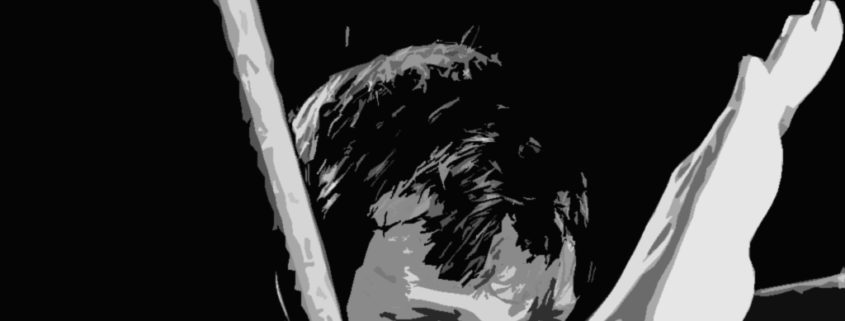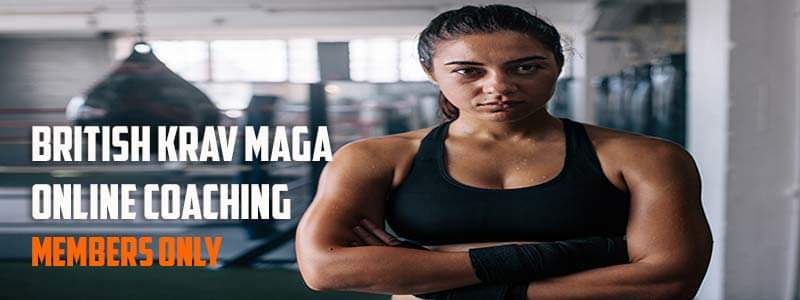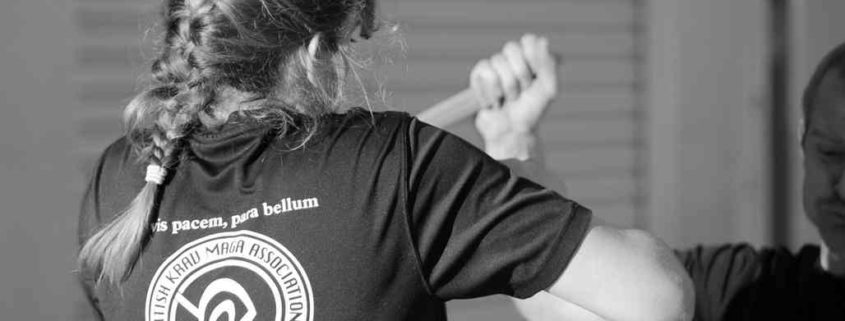Krav Maga Online Self-Defence and Fitness Training
/0 Comments/by w4n320202The MMA vs Self Protection Question Answered

This question has been around since god knows when. The answer is actually pretty straight forward. No its not going to be “well one is for the streets and one for the ring” but that is part of it.
This video below is what sparked the debate (again) This partly because people on both sides do not really understand what the other brings to the table. In most cases people aren’t willing to to try something they don’t fully understand.
Now firstly let me say this. There is a lot of BS self defence out there. Even in krav maga so do your own due diligence. Putting all self defence instructors in one box is a little naive and the same goes for people who practice MMA or combat sports. There are people of vastly different capabilities.
httpss://youtu.be/1mqrjF_VgNs
To understand this fully we need to look at what each brings to the table. We are going to assume that each person is well versed in their field & only trains in that discipline.
Self defence wise we will look at what I teach. Realistic, no nonsense and gritty combatives. You should also note that I supplement my combatives with Muay Thai, BJJ and MMA when I can. I’m not an expert in all these fields by no means, but I do cross train. This way it is unbiased! (Hint at what the answer to the question is)
MMA Pros for self defence:
- High striking ability with extremely good accuracy, timing and the ability to chain strikes together. Plus the ability to deliver maximum power through correct body mechanics.
- Has excellent footwork & movement. (Key for multiple attackers)
- Excellent level of grappling, take down defence and the ability to fight and finish on the ground. Also includes tactile sensitivity to certain energies with the ability to counter from multiple situations.
- Able to train in their chosen discipline at relatively high level of force (especially grappling)
MMA Cons for self defence:
- Doesn’t train for typical violent engagements and focuses on mutual consent, ring craft and point scoring.
- Doesn’t train for multiple attackers, heightening the chances of tunnel vision under stress.
- Doesn’t train for weapons attacks meaning they either have no approach, or will approach the wrong way.
- Likely to repeat what they know under stress which may be detrimental in the situation.
- Doesn’t train for dirty tactics, again making it unlikely to utilize these tools under stress.
Combatives Pros for self defence:
- Trained to recognize pre threat cues and taught to avoid conflict where possible maximizing survival.
- Understands the law relating to reasonable force.
- Trains to understand how the dynamics of violence works. Be first, be aggressive and get out ASAP.
- Trains to utilize the environment and dirty tactics as needed.
- Focuses purely on the most common violent trends and aggressive primitive attacks.
- Trains for weapons meaning responses will be more efficient and will understand the complexities of dealing with them before the event itself.
- Trains for multiple attackers and taught to constantly scan making tunnel vision less likely.
Combatives Cons for self defence:
- Is designed for explosive violent events that end quickly, anything longer and the combatives practitioner may end up out of depth.
- Doesn’t have the skill against someone who is well trained when there is no escape or weapons to hand.
- In most cases has very limited striking ability. They will focus on power and simple strikes to overwhelm an attacker to illicit an escape.
- Very limited grappling ability. The focus is on escaping immediately but may come unstuck if pinned and dirty tactics have no effect or cannot be used.
- Cannot repeat most tactics at higher resistance in training due to the injury potential.
I personally feel self defence is a mindset more than anything. There are things unique to it such as the weapons defence’s.
Combatives is for that 10-20 second explosive encounter to be able to finish the threat, escape or access weapons. Anything longer than that you need added skills
There are skills that will carry across from traditional martial arts into self defence providing that you understand the context in which to use them. An MMA fighter with a Krav Maga/street mentality is formidable (look at Bas Rutten) On the flip side to that though, whether you like it or not street violence is different. It’s explosive vicious and usually from an ambush.
whether you like it or not street violence is different
If you only train for the ring you train for tunnel vision & neglect weapons. If you only train krav you going to be in trouble if the attack prolongs and you end up toe to toe with no escape.
I think purists on both sides of sport & self defence need to accept that each has useful skills. Although for different arenas it can’t hurt to train both.
Krav Maga Bristol Striking combinations
Krav Maga Striking Combinations
The combative foundation of Krav Maga or any form of self defence should be built on a mixture of muscle memory, experience under stress, timing and power. The elite of any profession are those who have drilled and redrilled and mastered the basics. Some of the striking combinations that we will be working on for the next 2 weeks:
and power. The elite of any profession are those who have drilled and redrilled and mastered the basics. Some of the striking combinations that we will be working on for the next 2 weeks:
Typically at the club we tend to use 2 or 3 different numbering systems based on systems that I have trained myself in the past.
Eight Things You Need to Do to Become a Successful Martial Arts Practitioner
Interested in learning martial arts? Here are Eight Things You Need to Do to Become a Successful Martial Arts Practitioner….
Want to improve your Krav Maga or Martial arts training. Here’s eight things to improve your game…
1. Set your goals, write them somewhere you can see them, do you want to lose weight? Do you want to be fighting fit? Do you want to master a martial art? Do you want to be confident, driven and goal orientated? Decide what your ultimate goal is and then take steps to making it happen. Read more
Krav Maga Bristol Target Hardening
Krav Maga Bristol Target Hardening
 Krav Maga Bristol Instructor Jim Halton writes about the concept of target hardening and what it means to you…
Krav Maga Bristol Instructor Jim Halton writes about the concept of target hardening and what it means to you…
Krav Maga Bristol Sparring Tips
Krav Maga Bristol Instructor Jim Halton shares some sparring tips to help improve your sparring in Krav Maga lessons
1. Have a gameplan! In Krav Maga on day 1 you get shown your basic stance and how to strike, feet should be shoulder width apart, hands held high, [More…]
Mugged for an iphone
‘Yesterday I had one of the worst experiences of my life, I was mugged at knife point meters from my front door’
Yesterday, I had one of the most unpleasant experiences of my life when I was mugged at knife point in broad daylight just metres from my front door. But I learnt a lot about how I could have allowed the police to better respond to a crime like this, and the actions that I needed to take to ensure my data was safe.
What was the robber after? My iPhone, according to the police, the target of many mugging attacks.
Here’s what happened. After arriving at my nearest London Underground stop, in North West London, I walked up a side street to my house. It’s a journey I’ve made hundreds of times and never one that I have been particularly concerned about my safety during. While walking, I received a text message, which I was replying to. I have to say that given it was 10.20am, I didn’t feel particularly at risk for having done so.
I was wrong, and from nowhere, a youth on a bicycle confronted me holding a knife. “Give me your iPhone” he shouted. I wasn’t sure how to react; I looked around while shouting “leave me alone!” But as I looked I became aware that there was no one else on the street.
“Don’t be f**king stupid!” he shouted, pushing a blade close to my neck
The youth came closer to me, I was holding the phone, but he was on his bike and I did try and run, principally because I didn’t want to actually get into physical contact with him. He started grabbing me and somehow my iPhone cover seemed to get detached from the phone, leaving him with the cover and not the phone. “Don’t be f**king stupid!” he shouted, pushing a blade close to my neck. I gave up, giving him my phone and he cycled off.
I ran home, I’m not ashamed to say, crying. When I got there I immediately phoned the police while loading my iPad. The operator told me that officers would be with me in minutes, with their own iPad so that they could use “Find My iPhone” to see if the criminal was still in the area, the operator asked for my logins so that they could start looking while driving to me. I tried myself as well, but the location services settings on the missing iPhone appeared to have been disabled.
Within minutes, two wonderfully calming police officers arrived and we went out in their car to try and identify the robber. Had he have not turned off the location settings, it may have been possible to work out where he was.
I realised that, unlike when I had my phone pick-pocketed (I seem to have a face for this sort of thing), my phone wasn’t locked when it was stolen. I had already unlocked it to reply to the message. This meant that the robber had a lot more access to my device that they would have done if it had have been locked. Indeed, when my phone was pick-pocketed in New York, police were able to find the rough location of the phone, but were unable to recover it. But even knowing the rough location was only possible because it was still continuing to beam out its location until it was switched off.
Yesterday’s attacker appeared to have immediately switched off the location services settings on the iPhone. But I’ve since learnt that it’s possible to prevent someone from doing this. In addition, it’s important to ensure that the robber doesn’t turn off functions like “Find My iPhone”.
Here’s how you do it:-
(1) Open the settings function
(2) Touch General
(3) Select Restrictions
(4) This will ask you to set a Restrictions passcode. Chose one that is different from your unlock passcode
(5) Scroll down the list of restrictions until you find “Allow Changes”
(6) Open Location
(7) Select the “Don’t Allow Changes” option
(8) Go back to the Restrictions menu and select Accounts
(9) Then chose “Don’t Allow Changes”, this stops iCloud and Find My iPhone being disabled then repeat for “Deleting Apps”
This will mean that anyone who gets hold of your phone will find it very hard to stop it beaming out a location and it stops them from disabling iCloud and Find My iPhone
Of course this sort of trick only helps if the phone is still connected to your phone network. It’s likely though that you will choose to block your SIM CARD in case someone starts making a load of expensive calls. But it will be worth keeping it connected for a little while to see if the device appears on “Find My iPhone” or on iCloud.com.
But the other key thing that I started to consider was whether the person may gain access to my personal information stored inside my iPhone. As soon as the device locked, the robber would be in theory locked out because I always use an eight digit passcode (rather than the standard 4). But if they kept playing with the phone (maybe on wifi) then they would continue to gain access to my personal information.
So I considered what I would need to do to ensure they couldn’t access anything that wasn’t stored locally on the phone. Email is a treasure trove of personal information and would have allowed the robber to effectively gain access to my PayPal, Amazon, iTune and other online billing accounts. So first off, I changed the passwords for every single email service I use.
Then I thought about social networking in particular Twitter and Facebook. Changing the password on Facebook was easy at httpss://www.facebook.com/settings?ref=mb. Here you also have the option to force any apps on smart phones and tablets to be automatically logged out to ensure that who ever wants to access them is really you.
Twitter was harder and was in two stages. Firstly I went to httpss://twitter.com/settings/password and changed my password. But then I noticed that my iPad was continuing to access my Twitter account without the new password being stored. That’s because Twitter doesn’t automatically check that an application connected to it has the correct password. So I actually asked on Twitter for advice and found this page httpss://twitter.com/settings/applications where I found a list of all of the applications granted permission to access my account. For the iPhone and iPad access, I selected iOS by Apple and clicked on “Revoke access”. This meant that I’d need to login again to Twitter on each Apple device I use to connect to the social network.
Of course, you may need to follow similar steps for other applications on your phone such as PayPal, eBay or Google+.
Using Find My iPhone, I did try to remotely wipe the device after the police concluded that it would be unlikely that we’d spot him. But thus far, the request has not been successful.
But when it comes to the mugging itself, what did I learn?
Perhaps that I shouldn’t be using my mobile phone, while I’m mobile, out and exposed in a public place. But given that is what they are for, it seems pointless advice. I’m certainly going to be more careful about where I’m displaying it. It’s too easy to forget that when it’s in your hands, you are literally holding a £700 piece of technology. It’s so much more valuable than a wallet, particularly given that most of us don’t carry much cash, and chip and pin in theory makes it hard for thieves to use our credit and debit cards.
The other thing I learnt, is how valuable it is to have my social media community around me in a time like this. Some of my Twitter followers have been out looking for a cyclist on that street (I assume he targets it regularly), others gave me really useful advice on how to deal with the technological challenges that the incident threw up.
It also meant that my family learnt about it differently. My grandparents saw that I was attacked on their Android while looking at Facebook while shopping. One of my sisters found out when she was emailed by a friend, who had heard from a friend that I had been attacked. My sister then asked my brother-in-law if I had been tweeting about something bad, and he then forwarded her the stream of tweets. My parents found out in the more usual way, I phoned from a landline, a number no-one had actually called me on before because everyone had my iPhone number, or at least they did.
Article by Benjamin Cohen
Krav Maga Bristol
This article gives an interesting insite into the process of mugging. From a training perspective I would make a few recommendations.
1. Dont text in the street. Texting requires requires thought and co-ordination. It takes focus and in the real world this means lack of awareness, makes you very vulnerable, and that you demonstrate in plain site have a phone worth stealing. If you must reply, STOP, check look around and be aware whilst on the phone. The mere act of being aware will put many potential muggers off.
2. Always have your phone locked. It makes it harder to access the phone.
3. Dont be a hero. If there is a weapon and you cant easily escape – give the phone over and get away fast. If the Mugger gets too confident they may take more time and demand more or even assault you after.
4. If you decide you are going to act, be ruthless and profoundly aggressive (within the law). This could mean simply running and barging the attacker or fighting back.
5. Make noise – lots of it – shout, scream draw attention. Whilst many people may not act criminals hate to be seen as it increases the risk of capture
Stay Safe
Paul Grey
Accredited Training
Our training and gradings are regulated and accredited by British Krav Maga



